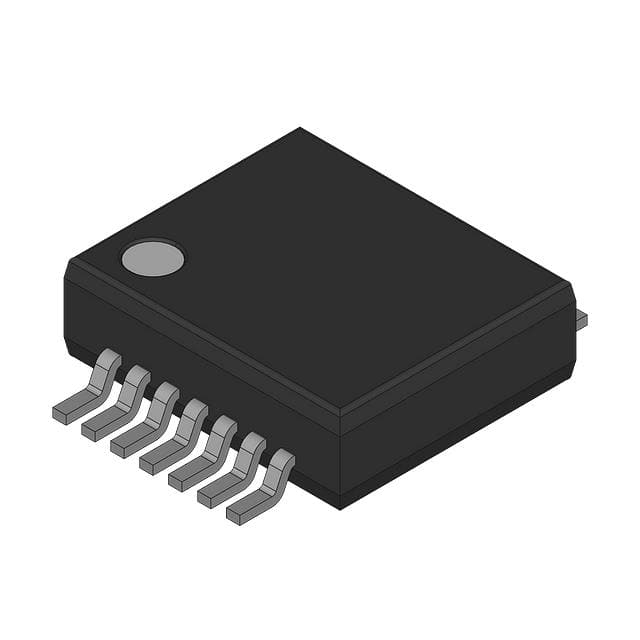SAF7746HW/N100,518 Product Introduction:
NXP USA Inc. Part Number SAF7746HW/N100,518(Embedded - DSP (Digital Signal Processors)), developed and manufactured by NXP USA Inc., distributed globally by Jinftry. We distribute various electronic components from world-renowned brands and provide one-stop services, making us a trusted global electronic component distributor.
SAF7746HW/N100,518 is one of the part numbers distributed by Jinftry, and you can learn about its specifications/configurations, package/case, Datasheet, and other information here. Electronic components are affected by supply and demand, and prices fluctuate frequently. If you have a demand, please do not hesitate to send us an RFQ or email us immediately sales@jinftry.com Please inquire about the real-time unit price, Data Code, Lead time, payment terms, and any other information you would like to know. We will do our best to provide you with a quotation and reply as soon as possible.
Introducing the NXP USA Inc. SAF7746HW/N100,518, a cutting-edge product designed to revolutionize the audio industry. This advanced audio processor offers a wide range of features and is suitable for various application fields.
The SAF7746HW/N100,518 boasts exceptional audio performance, delivering crystal-clear sound quality and immersive audio experiences. With its high-resolution audio processing capabilities, it ensures every detail of the audio is reproduced accurately, providing an unparalleled listening experience.
Equipped with advanced noise cancellation technology, this audio processor effectively eliminates background noise, allowing users to enjoy their audio content without any distractions. Additionally, it supports a wide range of audio formats, including MP3, AAC, and FLAC, ensuring compatibility with various audio sources.
The SAF7746HW/N100,518 is highly versatile and can be used in a variety of application fields. It is an ideal choice for automotive audio systems, providing superior sound quality and enhancing the overall driving experience. It is also suitable for home entertainment systems, delivering immersive audio for movies, music, and gaming.
Furthermore, this audio processor is perfect for professional audio equipment, such as mixing consoles and sound reinforcement systems. Its advanced features and high-performance capabilities make it a reliable choice for audio professionals.
In conclusion, the NXP USA Inc. SAF7746HW/N100,518 is a state-of-the-art audio processor that offers exceptional sound quality, advanced features, and versatility. Whether it's for automotive, home entertainment, or professional audio applications, this product is sure to exceed expectations and elevate the audio experience to new heights.
DSP Digital Signal Processing (Digital Signal Processing) is a technology that uses computers or special processing equipment to digitize signals. It converts analog signals into digital signals, and uses efficient algorithms to sample, transform, filter, estimate, enhance, compress, identify and other operations, and finally gets a signal form that meets people's needs. Compared to general-purpose processors, DSPS typically have higher arithmetic throughput, lower latency, and more efficient memory management mechanisms, all of which are designed to meet the requirements of real-time signal processing.
Application
DSP (Digital Signal Processing) technology is mainly reflected in the accurate processing of signals. It can efficiently perform complex operations such as signal analysis, noise suppression and feature extraction, and provide reliable data support for subsequent decision or control. In addition, DSP also has high-speed computing power and low power consumption characteristics, especially suitable for scenarios that require real-time processing of large amounts of data, such as audio processing, video codec, communication systems, image processing, control systems and robots, medical and bioinformatics and other fields.
FAQ about Embedded - DSP (Digital Signal Processors)
-
1. What is DSP in microcontrollers?
DSP (Digital Signal Processor) is a microprocessor specifically used to process digital signals. It is different from the traditional CPU (Central Processing Unit). DSP is mainly used in occasions that require a large number of floating-point operations, such as communications, audio processing, image processing and other fields.
The working principle of DSP is to convert the received analog signal into a digital signal, and then process and analyze these digital signals. DSP chip adopts Harvard structure, that is, the program and data are stored separately, and has a dedicated hardware multiplier, which can quickly implement various digital signal processing algorithms.
-
2. What are the three types of signal processors (DSP)?
There are three main types of signal processors (DSP): enhanced DSP, VLIW structure, superscalar architecture, and SIMD structure hybrid structure.
Enhanced DSP: This DSP has a highly optimized instruction set and structure that can quickly execute common signal processing algorithms. They are often used in applications that require high-speed signal processing.
VLIW structure: DSP with VLIW (Very Long Instruction Word) structure can execute multiple instructions in one cycle, thereby increasing processing speed. This structure is suitable for applications that require high parallel processing capabilities.
Superscalar architecture and SIMD structure hybrid structure: These structures combine the advantages of superscalar and SIMD (Single Instruction Multiple Data) technologies, can process multiple data in a single instruction cycle, and are suitable for application scenarios that require high-performance computing.
-
3. What is the difference between DSP and FPGA?
The main difference between DSP and FPGA lies in their design purpose, structure, programming method and applicable scenarios.
First of all, there are fundamental differences between DSP and FPGA in design purpose and structure. DSP (digital signal processor) is designed for digital signal processing, with a dedicated instruction set and hardware accelerator for efficient processing of digital signals. FPGA (field programmable gate array) is a programmable logic device that can be programmed according to user needs to realize various digital logic circuits. FPGA contains a large number of logic gates and triggers inside, usually using a lookup table structure, while DSP uses a Harvard structure, with separate data bus and address bus, allowing programs and data to be stored separately to increase processing speed.
In terms of programming methods, DSP is usually programmed through assembly or high-level languages (such as C/C++) and has a complete C language compiler. FPGA is designed through hardware description language, which has high flexibility but high programming complexity. DSPs are relatively easy to program because they are designed for specific types of computing tasks, while FPGAs offer greater flexibility but are more complex to program.
Finally, DSPs and FPGAs are suitable for different application scenarios. DSPs are suitable for tasks that require high-speed processing of large amounts of digital signals, such as communications, audio processing, image processing, and other fields. FPGAs are suitable for applications that require highly customized hardware acceleration, such as high-performance computing, complex signal processing, and more. The flexibility of FPGAs makes them more advantageous in projects that require frequent changes in functionality, while DSPs perform better in applications that require efficient processing of fixed algorithms.
 Lead free / RoHS Compliant
Lead free / RoHS Compliant
























